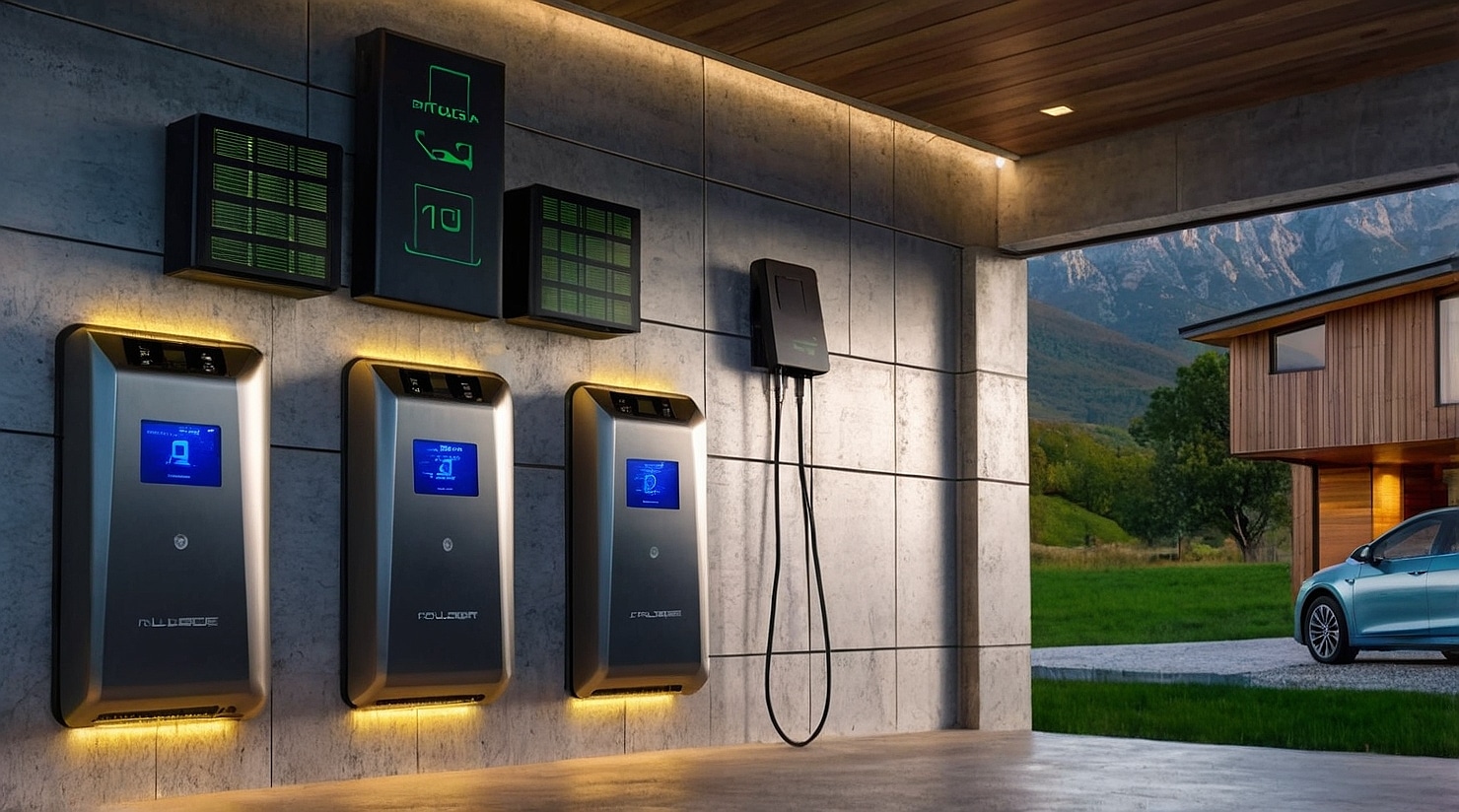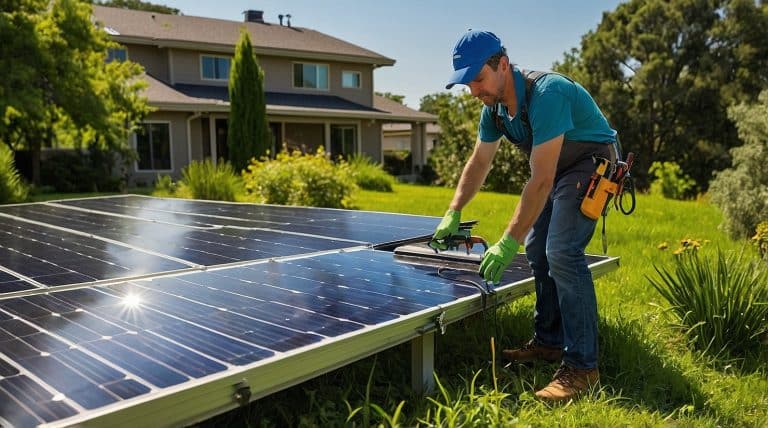Best Solar Battery Storage: Top Options for 2025 Revealed

Power outages can be really frustrating, but they don’t have to throw a wrench in your daily life! Choosing the best solar battery storage gives you a reliable way to keep your home powered up, even when the grid goes down.
With solar energy on the rise and some great incentives making it easier to access renewable energy, having a dependable battery backup is super important. In this guide, we’ll explore the best solar battery storage options out there, focusing on key features like battery capacity, round-trip efficiency, and warranties. This way, you can make the best choice for your energy storage needs!
Why Solar Batteries Might Be For You
Solar batteries do more than provide backup power—they can transform the way you manage energy. With the rise of time-of-use rates, storing inexpensive solar power during off-peak hours and using it during high-demand periods can lead to significant electricity cost savings. Plus, the best solar battery storage can power your home during outages, ensuring peace of mind when the grid fails.
Beyond cost savings, solar battery storage increases energy independence by reducing reliance on the power grid. For those striving to meet renewable energy and environmental goals, these systems align perfectly with a sustainable lifestyle by making better use of clean energy generated by solar panels.
Types of Solar Batteries
Choosing a battery is more complex than a simple purchase. Different batteries suit different requirements. Understanding the technologies available helps find the right fit for your energy storage capacity. Selecting the best solar battery storage system depends on understanding the available options. Each type of battery offers unique benefits, suited to different energy needs.
Lead-Acid Batteries
Lead-acid batteries have been a trusted option for decades. Affordable, costing around $260 per kWh, they are a great entry point for basic energy storage systems. However, they come with trade-offs, such as bulkiness, the need for climate-controlled storage, and shorter lifespans compared to modern alternatives. If budget constraints are a priority, lead-acid batteries may still be considered one of the best solar battery storage options to consider in your setup.
Pros:
- Cost-Effective: Generally more affordable upfront compared to other battery types.
- Proven Reliability: Established technology with a long history of dependable use.
- High Surge Currents: Capable of supplying high surge currents, beneficial for applications requiring a sudden burst of energy.
Cons:
- Lower Energy Density: Bulkier and heavier relative to the amount of energy they store.
- Regular Maintenance Required: Needs periodic maintenance, such as checking and refilling electrolyte levels.
- Shorter Lifespan: Typically have a shorter cycle life compared to newer battery technologies.
Lithium-ion Batteries
Lithium-ion batteries are considered as one of the best solar battery storage choices, used not only in solar systems but also in electric vehicles and everyday devices. A specific type, lithium iron phosphate (LFP) batteries, stands out for its superior safety, longer cycle life, and robust energy storage capacity.
LFP batteries offer longer lifespans, higher storage capacity, and enhanced safety than lead-acid batteries. While the initial costs are higher, their longevity and efficiency often result in lower lifetime costs, making them an excellent long-term investment. For example, systems like the Tesla Powerwall and Generac PWRcell rely on lithium-ion technology.
Companies like Powerplus Energy specialize in similar self-managed battery systems. For more on the longevity and capacity of this type of battery, check out this article about lithium battery storage.
Pros:
- High Energy Density: Offers more energy storage in a lighter and more compact form.
- Longer Lifespan: Can endure more charge-discharge cycles, leading to a longer operational life.
- Low Maintenance: Requires minimal maintenance compared to lead-acid batteries.
Cons:
- Higher Initial Cost: More expensive upfront than lead-acid batteries.
- Thermal Sensitivity: Performance can be affected by extreme temperatures and requires proper thermal management.
- Safety Concerns: Risk of thermal runaway if not managed properly, though advancements have improved safety features.
Flow Batteries
Flow batteries, known for their scalability and stability, are an innovative option. These batteries use water-based fluids and are structured like large tanks. Their modular design allows users to expand storage by adding modules, making them highly customizable for evolving energy needs. Although they require a higher upfront investment, their long lifespan and low maintenance costs offer excellent value over time.
By understanding these different technologies, you can choose another of the best solar battery storage systems that matches your energy storage capacity needs and long-term goals. For additional insights, explore best off grid power systems.
Pros:
- Scalability: Energy capacity can be increased easily by expanding the electrolyte tanks.
- Long Lifespan: Capable of sustaining numerous charge-discharge cycles with minimal degradation.
- Deep Discharge Capability: Can be discharged to a greater extent without harming the battery’s longevity.
Cons:
- High Initial Cost: Significant upfront investment compared to other battery types.
- Lower Energy Density: Requires more space due to bulkier system components.
- Complexity: More intricate system design and operation, necessitating specialized knowledge for maintenance.
Key Features: How To Choose the Best Solar Battery Storage
Choosing the best solar battery storage isn’t just about keeping up with the latest trends; it’s about selecting a system tailored to your specific energy needs. From daily power consumption to peak energy demands, finding the right solution means considering a range of critical factors.
These include battery capacity, lifespan, power output, and even the brand’s reputation. Making the right choice can help reduce electricity costs, ensure reliable backup power, and maximize your solar energy system’s efficiency.
Capacity
Battery capacity, measured in kilowatt-hours (kWh), defines how much energy your system can store. The size of your battery should match your daily energy consumption and backup power needs.
To calculate your ideal capacity, you’ll want to think about the essentials you’d need during a power outage, such as lighting, refrigeration, or internet connectivity. For instance, powering a fridge and a few lights might require a 5-10 kWh battery.
Modular batteries, like the Tesla Powerwall, allow you to expand capacity as your energy needs grow. Understanding your electricity usage is key to choosing the right battery size and ensuring your energy storage systems align with your energy independence goals.
Lifespan and Cycles
The lifespan of a battery is measured in charge and discharge cycles. Each cycle life represents one complete use of the battery, which gradually wears it down over time. High-quality batteries, like lithium iron phosphate (LFP), offer longer lifespans compared to lead-acid batteries, making them more cost-effective in the long term.
Environmental conditions also play a crucial role. Extreme heat or cold can accelerate degradation, reducing the battery’s lifespan. Advanced systems, like the Generac PWRcell, often come with built-in thermal management to maintain optimal temperature. Some manufacturers, such as Sonnen, guarantee at least 10,000 cycles, offering durability and reliability for your solar battery storage.
Power Output
Power output refers to the maximum amount of electricity a battery can deliver at any given time. This is critical for handling peak energy demands, such as running multiple high-power appliances like washing machines, air conditioners, or microwaves simultaneously.
A high-output system ensures your backup power remains dependable during periods of heavy electricity use. When evaluating options, look for systems with enough power output to support your household’s needs during power outages. This feature is particularly important for families with larger electrical loads.
Round-Trip Efficiency
Another key attribute of the best solar battery storage systems is the round-trip efficiency which indicates how much energy is retained after a full charge and discharge cycle. For example, if you charge a battery with 10 kWh and it delivers 9 kWh back, the round-trip efficiency is 90%.
This metric is important because it determines your system’s actual usable energy. High-efficiency batteries minimize energy loss and maximize savings. Look for systems with round-trip efficiencies above 85%—a common benchmark for high-quality lithium-ion batteries.
Brand and Warranty
When investing in a solar battery, the brand you choose matters. Reputable brands like Tesla, Generac, and LG Chem have established trust through reliable performance, excellent customer support, and robust warranties. Warranty periods typically range from 5 to 15 years and provide peace of mind against manufacturing defects or early failure.
In addition to brand reputation, consider working with local installers. They can help optimize the setup of your battery systems and provide ongoing maintenance and support. A dependable brand with a solid warranty ensures your investment in solar energy storage pays off for years to come.
By weighing these features carefully, you can find the best solar battery storage system that meets your energy needs, aligns with your budget, and supports your goals for clean, renewable energy.
Best Solar Battery Storage: Top Brands
Choosing a battery brand requires research and comparison, similar to selecting any other appliance. Some brands consistently deliver reliable performance. Battery options vary depending on the type of system, grid solar or off-grid.
| Brand | Type | Known For |
|---|---|---|
| Tesla | Lithium-ion | High performance, sleek design, and strong brand recognition. Tesla Powerwall is popular but consider long-term support when making large financial decisions. Tesla manufactures some batteries domestically, affecting factors like production costs and battery cost for the consumer. |
| Sungrow | Lithium-ion | Good value and solid reliability. Consider the factors impacting battery production and manufacturing processes that influence consumer prices. Battery warranties vary by brand. |
| Sonnen | Lithium-ion | Exceptional lifespan (guaranteed 10,000 cycles or 10 years). Sonnen offers advantages for long-term solar users, especially in off-grid or agricultural settings. Government policies and location influence solar battery choices and usage scenarios. |
| BYD | Lithium-ion | Innovation and cutting-edge technology in LFP batteries. BYD’s popularity is driven by its high-rated batteries and features like safety, lifespan, and charge cycles. Factors like installer quality and whole-system design affect overall system performance. Choosing a battery involves balancing brand reputation with system requirements and professional assessment from local installers. |
What About Cost and Incentives?
Solar battery prices range from $12,000 to $22,000. However, a federal tax credit is available for batteries with 3 kWh or more capacity installed during or after 2024. Check for additional state and local incentives. Understanding battery cost is crucial when budgeting for a solar system.
Best Solar Battery Storage for Going Off-Grid
Off-grid living is increasingly popular. LFP batteries offer the best characteristics for energy independence.
Consider factors like renewable energy sourcing, external temperature influence, and long-term performance when selecting the best battery storage. Researching the best battery for a solar power system requires a thorough evaluation of system needs.
- Powerplus Energy: These self-managed lithium batteries are favored for their simplicity and reliability in off-grid setups. Powerplus batteries are a popular choice.
- Tesla Powerwall: Primarily designed for on-grid use, Tesla Powerwall’s high performance makes it viable for off-grid systems if sized and installed correctly by professionals.
Best Practices
Choosing a solar battery system requires careful research and consideration of your long-term energy goals. Understanding how batteries perform over time, considering factors like degradation and solar seasonality, is crucial.
Seek expert advice from experienced professionals who can assess your specific needs and recommend a system that balances cost, performance, and longevity. Look for installers familiar with battery warranties, solar inverters, and battery sizes for rooftop solar installations. Consider your typical energy usage and potential cost savings. Consulting with local installers ensures the best-suited setup for your location and conditions.
FAQs about best solar battery storage
What is the best type of battery for solar storage?
The ideal battery type varies based on individual requirements. Lithium-ion batteries, particularly LFP batteries, typically offer the best balance of performance, lifespan, and safety.
Budget, backup power needs, and desired storage capacity all influence battery choice. Finding the best battery involves weighing these factors against your energy goals.
Which solar battery lasts the longest?
Flow batteries generally boast the longest lifespan in charge cycles. However, their higher initial cost makes lithium-ion, particularly LFP types, a more practical choice for many. Some batteries have longer warranties.
Sonnen batteries excel in long-lasting off-grid applications. Lead-acid batteries have shorter lifespans compared to LFP or other Lithium batteries. The best choice depends on your budget and time horizon.
Is a 5kW or 10kW solar battery better?
The ideal battery capacity (kWh) is determined by factors like peak energy usage, charging capabilities, external temperatures, and overall system efficiency. The battery size needs to match your electrical loads and projected high electricity usage.
A professional assessment considering all these elements will determine the optimal battery size for your needs. The best approach considers factors like peak use periods and external temperature impacts, especially with renewable energy sources.
Consider how different devices charging simultaneously will affect battery performance. This includes accounting for how each component affects the whole solar and energy storage systems and overall efficiency.
Is it worth adding a battery to existing solar panels?
Adding a battery to existing solar panels offers value for blackout protection, cost reduction, and energy independence. It provides backup power during grid failures, enables peak shaving, and maximizes cost savings.
For off-grid systems, a battery becomes essential for storing generated solar power. This increases energy independence and minimizes reliance on traditional utility providers, especially as renewable energy adoption increases.
Conclusion
Choosing the best solar battery storage requires balancing cost, backup power needs, desired energy independence, and expected lifespan. Consider all factors to create the most effective energy storage system.
Consult a local solar energy expert for personalized guidance and system design. Consider solar panels generate direct current (DC) electricity and how inverters convert DC to alternating current (AC) for household appliances. Matching all components of a solar system with battery backup is essential for efficiency and optimal performance. Remember, past experiences might not provide the ideal solution for current or future needs. A comprehensive assessment ensures the best fit solution.






